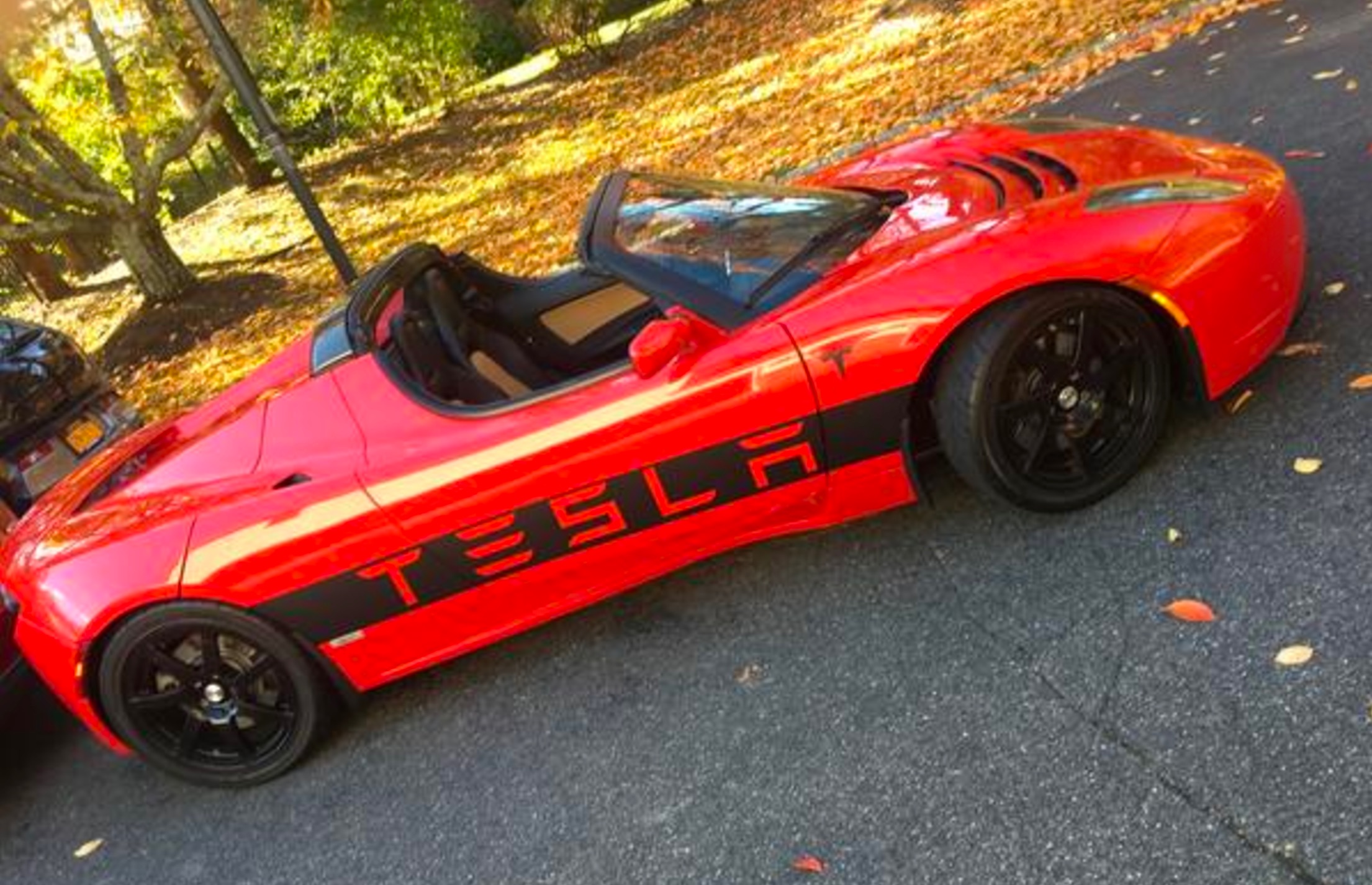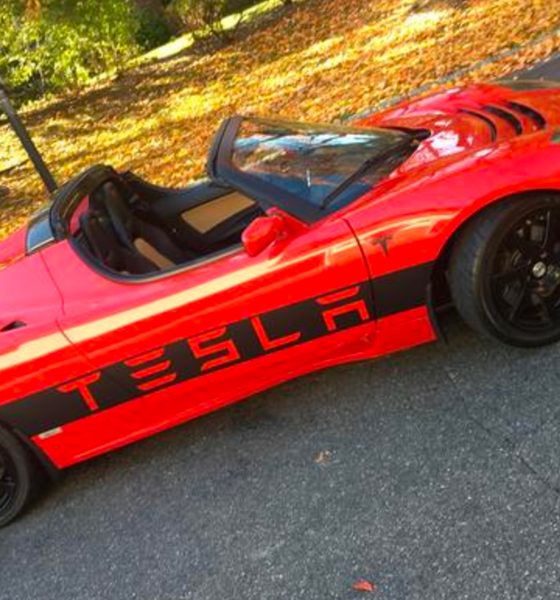

Energy
What Tesla and Honda’s early success have in common
“To the more established brands, it is a young upstart company with performance claims that seem unreasonably optimistic. Instead of being rooted in reality, its new sporty two-door appears to be little more than the expressed will of a mercurial leader. There are already rumors of potential bankruptcy. Surely, this is hubris run amok.”
The automaker in question? Honda in the late 1960s. Fifty years later, Tesla and Elon Musk are the objects of great admiration, but also constant targets of criticism. In a recent article in The Globe and Mail, Brendan McAleer tells a fascinating story of a young company with a charismatic leader, which finally found great success by tempering its expansive dreams with a dose of reality.
In the sixties, Honda and its founder, Soichiro Honda, faced attacks very similar to those being launched at Tesla today. Mr. Honda’s pride and joy was the Honda 1300, aka the Coupe 9. It was an innovative, forward-looking little car, with an air-cooled four-cylinder engine, independent suspension, and excellent fuel efficiency.
The problem was Soichiro Honda himself, who apparently couldn’t resist the urge to keep improving his design. At one point, he ordered the assembly line to stop so that new features could be added. “Eventually, his engineers set up a desk in the factory to deal with his constant interfering,” McAleer writes (sound familiar?). “Honda was forced to step back and his engineers worked to combine his passionate ideas with the practical needs of modern mass manufacturing. The next car they produced was the Honda Civic. You could say it did pretty well.”
 |
Above: The iconic Soichiro Honda celebrates the first H1300 car off the production line (Image: Honda)
Like Mr. Honda, Elon Musk is famous for his interest in every detail of his company’s vehicles. However, it’s safe to say that the extremes of emotion Elon inspire go far beyond anything ever aimed at Mr. Honda, at least in the Western press. Is Musk “a messianic figure or the fraudulent leader of a cultish mob?” McAleer asks.
Noting that the truth surely lies somewhere in the middle, McAleer lists some of Tesla’s strengths and weaknesses. The latter include a consistent failure to deliver a product on time, quality-control issues and “an apparent inability to turn a profit” (which it might be more accurate to call a lack of interest in turning a profit).
McAleer goes on to say that Tesla’s corporate culture appears to discourage internal criticism, and cites Model X’s Falcon Wing doors, which even some at Tesla have characterized as a mistake, as a symptom of a top-down culture. He doesn’t seem to be enamored of some of Model 3’s innovations: “Clean-slate thinking is one thing, but ignoring the lessons learned by others is a mistake.”
Tesla’s greatest strength is the fanatical devotion of its customers, and in today’s brand-centric business world, that may be an insurmountable advantage. As a brand, Tesla is one of the greatest in history, right up there with Harley-Davidson and the Grateful Dead. Legacy automakers are gearing up to offer vehicles to compete with Tesla (as they reportedly have been for several years now), but it’s difficult to imagine any of them ever rivaling Tesla’s brand loyalty.
Elon Musk has set out to electrify the world’s transportation system – a far loftier goal than anything Soichiro Honda thought about doing. But as Honda’s story illustrates, those who would change the world need to ground their dreams in reality. Hopefully, the continuing rollout of Model 3 will demonstrate that innovative ideas combined with a healthy respect for the practical aspects of manufacturing and consumer behavior add up to a winning formula.
===
Note: Article originally published on evannex.com, by Charles Morris
Source: The Globe and Mail

Cybertruck
Tesla updates Cybertruck owners about key Powershare feature

Tesla is updating Cybertruck owners on its timeline of a massive feature that has yet to ship: Powershare with Powerwall.
Powershare is a bidirectional charging feature exclusive to Cybertruck, which allows the vehicle’s battery to act as a portable power source for homes, appliances, tools, other EVs, and more. It was announced in late 2023 as part of Tesla’s push into vehicle-to-everything energy sharing, and acting as a giant portable charger is the main advantage, as it can provide backup power during outages.
Cybertruck’s Powershare system supports both vehicle-to-load (V2L) and vehicle-to-home (V2H), making it flexible and well-rounded for a variety of applications.
However, even though the feature was promised with Cybertruck, it has yet to be shipped to vehicles. Tesla communicated with owners through email recently regarding Powershare with Powerwall, which essentially has the pickup act as an extended battery.
Powerwall discharge would be prioritized before tapping into the truck’s larger pack.
However, Tesla is still working on getting the feature out to owners, an email said:
“We’re writing to let you know that the Powershare with Powerwall feature is still in development and is now scheduled for release in mid-2026.
This new release date gives us additional time to design and test this feature, ensuring its ability to communicate and optimize energy sharing between your vehicle and many configurations and generations of Powerwall. We are also using this time to develop additional Powershare features that will help us continue to accelerate the world’s transition to sustainable energy.”
Owners have expressed some real disappointment in Tesla’s continuous delays in releasing the feature, as it was expected to be released by late 2024, but now has been pushed back several times to mid-2026, according to the email.
Foundation Series Cybertruck buyers paid extra, expecting the feature to be rolled out with their vehicle upon pickup.
Cybertruck’s Lead Engineer, Wes Morrill, even commented on the holdup:
As a Cybertruck owner who also has Powerwall, I empathize with the disappointed comments.
To their credit, the team has delivered powershare functionality to Cybertruck customers who otherwise have no backup with development of the powershare gateway. As well as those with solar…
— Wes (@wmorrill3) December 12, 2025
He said that “it turned out to be much harder than anticipated to make powershare work seamlessly with existing Powerwalls through existing wall connectors. Two grid-forming devices need to negotiate who will form and who will follow, depending on the state of charge of each, and they need to do this without a network and through multiple generations of hardware, and test and validate this process through rigorous certifications to ensure grid safety.”
It’s nice to see the transparency, but it is justified for some Cybertruck owners to feel like they’ve been bait-and-switched.
Energy
Tesla starts hiring efforts for Texas Megafactory
Tesla’s Brookshire site is expected to produce 10,000 Megapacks annually, equal to 40 gigawatt hours of energy storage.

Tesla has officially begun hiring for its new $200 million Megafactory in Brookshire, Texas, a manufacturing hub expected to employ 1,500 people by 2028. The facility, which will build Tesla’s grid-scale Megapack batteries, is part of the company’s growing energy storage footprint.
Tesla’s hiring efforts for the Texas Megafactory are hinted at by the job openings currently active on the company’s Careers website.
Tesla’s Texas Megafactory
Tesla’s Brookshire site is expected to produce 10,000 Megapacks annually, equal to 40 gigawatt hours of energy storage, similar to the Lathrop Megafactory in California. Tesla’s Careers website currently lists over 30 job openings for the site, from engineers, welders, and project managers. Each of the openings is listed for Brookshire, Texas.
The company has leased two buildings in Empire West Business Park, with over $194 million in combined property and equipment investment. Tesla’s agreement with Waller County includes a 60% property tax abatement, contingent on meeting employment benchmarks: 375 jobs by 2026, 750 by 2027, and 1,500 by 2028, as noted in a report from the Houston Business Journal. Tesla is required to employ at least 1,500 workers in the facility through the rest of the 10-year abatement period.
Tesla’s clean energy boom
City officials have stated that Tesla’s arrival marks a turning point for the Texas city, as it highlights a shift from logistics to advanced clean energy manufacturing. Ramiro Bautista from Brookshire’s economic development office, highlighted this in a comment to the Journal.
“(Tesla) has great-paying jobs. Not just that, but the advanced manufacturing (and) clean energy is coming to the area,” he said. “So it’s not just your normal logistics manufacturing. This is advanced manufacturing coming to this area, and this brings a different type of job and investment into the local economy.”
Energy
Tesla and Samsung SDI in talks over new US battery storage deal: report
The update was related by industry sources and initially reported by South Korean news outlets.

Recent reports have suggested that Tesla and Samsung SDI are in talks over a potential partnership to supply batteries for large-scale energy storage systems (ESS).
The update was related by industry sources and initially reported by South Korean news outlets.
ESS batteries to be built at Samsung’s Indiana plant
As noted in a report from Korea JoongAng Daily, the demand for energy storage systems has been growing rapidly in North America, thanks in no small part to the surge in AI investments across numerous companies. With this in mind, Tesla has reportedly approached Samsung SDI about a potential battery supply deal.
The deal is reportedly worth over 3 trillion Korean won (approximately $2.11 billion) and will span three years, according to The Korea Global Economic Daily. A battery supply deal with Samsung SDI could make sense for Tesla as the company already has a grid-scale battery, the Megapack, which is perfect for industrial use. Samsung SDI could simply supply cells for the EV maker.
Production of the batteries would reportedly take place at Samsung SDI’s joint venture factory with Stellantis in Indiana, which is currently under construction. Samsung SDI recently announced plans to use part of that plant’s EV lines to produce cells for ESS, with a targeted capacity of 30 GWh by the end of next year.
Tesla and Samsung’s partnership
At present, only a handful of manufacturers, including Korea’s LG Energy Solution, Samsung SDI, SK On, and Japan’s Panasonic, are capable of producing energy storage-scale batteries domestically in the United States. A Samsung SDI official issued a comment about the matter, stating, “Nothing has been finalized regarding cooperation with Tesla.”
The possible energy storage system deal adds another layer to Tesla’s growing collaboration with Samsung, which is already in line as a partner in the upcoming production of Tesla’s AI5 and AI6 chips. Early sample manufacturing of the AI6 is expected to begin in South Korea, with mass production slated for Samsung’s Texas-based Taylor foundry when it starts operations.
The AI6 chip will power Tesla’s next wave of high-volume projects, including the Optimus humanoid robot and the autonomous Cybercab service. Musk has called the partnership with Samsung a “real collaboration,” adding that he personally plans to “walk the line” at the Taylor facility to speed up progress.








